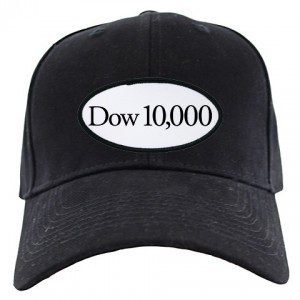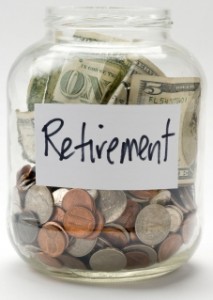As I write this, the Dow is flirting yet again with the 10,000 level – something it has done dozens of times since it first closed above that threshold more than 11 years ago!

People are understandably nervous, as evidence abounds that the economic recovery is faltering.
An astonishing fact was revealed in a cover story in “The Hulbert Financial Digest” July issue, titled, “Slow and steady wins the race.” The digest is an independent rating service that has tracked investment newsletters for the past 30 years.
It turns out that, “the investment advisor in first place for risk-adjusted performance over the last 30 years has been largely in cash for more than two decades.”
What does that mean? It means that, unless you were willing to take on lots of risk and volatility, you would have been better off burying your money in the backyard in Mason jars for the past three decades!

What passes as a pathetic excuse for financial and retirement “planning” was exposed in this month’s issue of Kiplinger’s Personal Finance magazine1.
The article profiled a California couple working with a financial and money management firm to ensure they have enough money to retire in two years, when the husband turns 62.
The article details all the steps the couple has taken to properly plan for this event over the last ten years. The husband summarizes it by saying…
I’ve done everything I could possibly do to get ready. Now it’s up to the market”
Huh?!?! Isn’t that like scraping and saving your hard-earned dollars for decades, stuffing them all in a sack, and dropping it on a craps table in Vegas??
Yet this is what passes for financial “planning”
It may come as no surprise that a new survey by Senior Market Advisor Magazine revealed that 55% of seniors currently without an advisor said there’s “absolutely nothing [an advisor] could do to earn their business.”

I was recently asked by Selling to Seniors magazine to comment on this. My response shocked the editor – and it will probably shock you, too. You can read it here, along with two overlooked options available to seniors who want to be sure their money will last as long as they do.

Another recent article on, “The Great Stock Myth,”inThe Atlantic2 revealed that, “even after a decade of lousy returns and a spectacular market crash, more than a quarter of Americans expect annual returns in the stock market to average 10 to 20 percent.”
The article points out that if the stock market’s return over the next decade or so is 2 to 3 percent above inflation, as some experts are predicting…
You’ll need to save close to 40 percent of your annual income to replace almost half of your income”
The article concludes, “whether Americans know it or not, they have spent decades basing their retirement plans on expectations of big capital gains in their houses and stock portfolios. Unless we suddenly become willing to save a huge chunk of our income every year, we may need to rethink our retirement plans.”
Housing fades as a means to build wealth

An article this week in The New York Times3 discusses why housing values are likely to only keep up with inflation and may ultimately return the money an owner put in, but will not multiply the investment.
This is actually nothing new. I have written about this for the past five years. Home prices have only appreciated around one percent more than inflation each year for the past century, according to Robert Shiller, co-creator of the Case–Shiller home price index.
So, if you can’t count on the stock market or real estate values to fund your retirement, what can you count on?
You can Bank On Yourself
Bank On Yourself is based on a twist on an asset class that has increased in value every single year for more than a century – including every period of economic boom and bust: dividend paying whole life insurance.
The Bank On Yourself concept involves adding little-known riders and options to the policy that supercharge the growth of your equity (“cash value”) in the policy – especially during the early years of the policy.
This lets you use it as a powerful financial management tool from day one.
The growth in these policies is not only guaranteed and predictable, it is also exponential – it gets better every single year – and no luck, skill or guesswork is required.
It gives you peace of mind when planning for retirement, because you can know the minimum guaranteed income you can take – and for how long you can take it.
Plus, you can get your hands on that money with little or no tax consequences under current tax law.
However, no two plans are alike. Each one is custom tailored to help you achieve as many of your short-term and long-term goals as possible – in the shortest time possible.
If you haven’t already requested a FREE Analysis, why not do so today? There’s no obligation to find out what your bottom-line numbers and results could be if you added Bank on Yourself to your financial plan.

Still have a few questions?
Find the answers here:
- What’s the rate of return of a Bank On Yourself-type policy?
- What do the companies used for Bank On Yourself invest in?
- How are these policies different from the ones the financial “gurus” talk about?
- Where do I find the money to fund a plan?
- I have good savings habits and little debt – how will Bank On Yourself help?
- How do I get started?


I appreciate your posts, but I had to chime in on the comment againsts real estate. Even if you have appreciation of only 3% per year, you are not accounting for leveraging. If 25% of a property is cash you put in and the property value goes up by 3%, your cash on cash return is not 3%, it is 12%. You don’t share the appreciation with the bank, you get their shares too. The less down, the better the returns.
I believe in buying cashflow properties for my investments, but I don’t completely ignore that I should have some gains based on leverage and inflation.
Does one have to buy and/or particpate in an insurance policy in order to become involved in Bank on Yourself?
There is no other financial product that will give you all the advantages and guarantees of Bank On Yourself, other than a specially-designed dividend-paying whole life policy. However, you do not necessarily have to be the insured on the policy. Someone you have an” insurable interest” in could be the insured and you would still own the policy and control the money in the policy.
Pamela,
I’m new to the concept of B.O.Y. It sounds interesting. How will the plans fair under high inflation (which is now inevitable) or even hyperinflation? Would they survive a collapse in the dollar like Peter Schiff is predicting? Thank you.
I’ve answered that question in part here.
Historically, dividends have tracked the inflation rate, and the exponential growth in these policies gives you some built-in protection against inflation.
In addition, your premium remains level, so you will be paying the premium with ever cheaper dollars.
I hope you’ll take advantage of a free, no-obligation Analysis that will show you the bottom line numbers if you add Bank On Yourself to your financial plan. You’ll also get a referral to a Bank On Yourself Professional who can answer all your questions.
If you like Peter Schiff, you might like what Bob Prechter has to say as well!
He is actually predicting a deflationary depression, and a collapse of the euro and believe it or not, but a climb in dollars (value), because people will flock to it for saftey due to the P.I.G.S in europe, (Portugal, Ireland, Greece, Spain) countries bringing it down.
His theory has to do with a more technical aspect than the Schiff Fundamental side of investing….so dont sell the dollar short just yet!